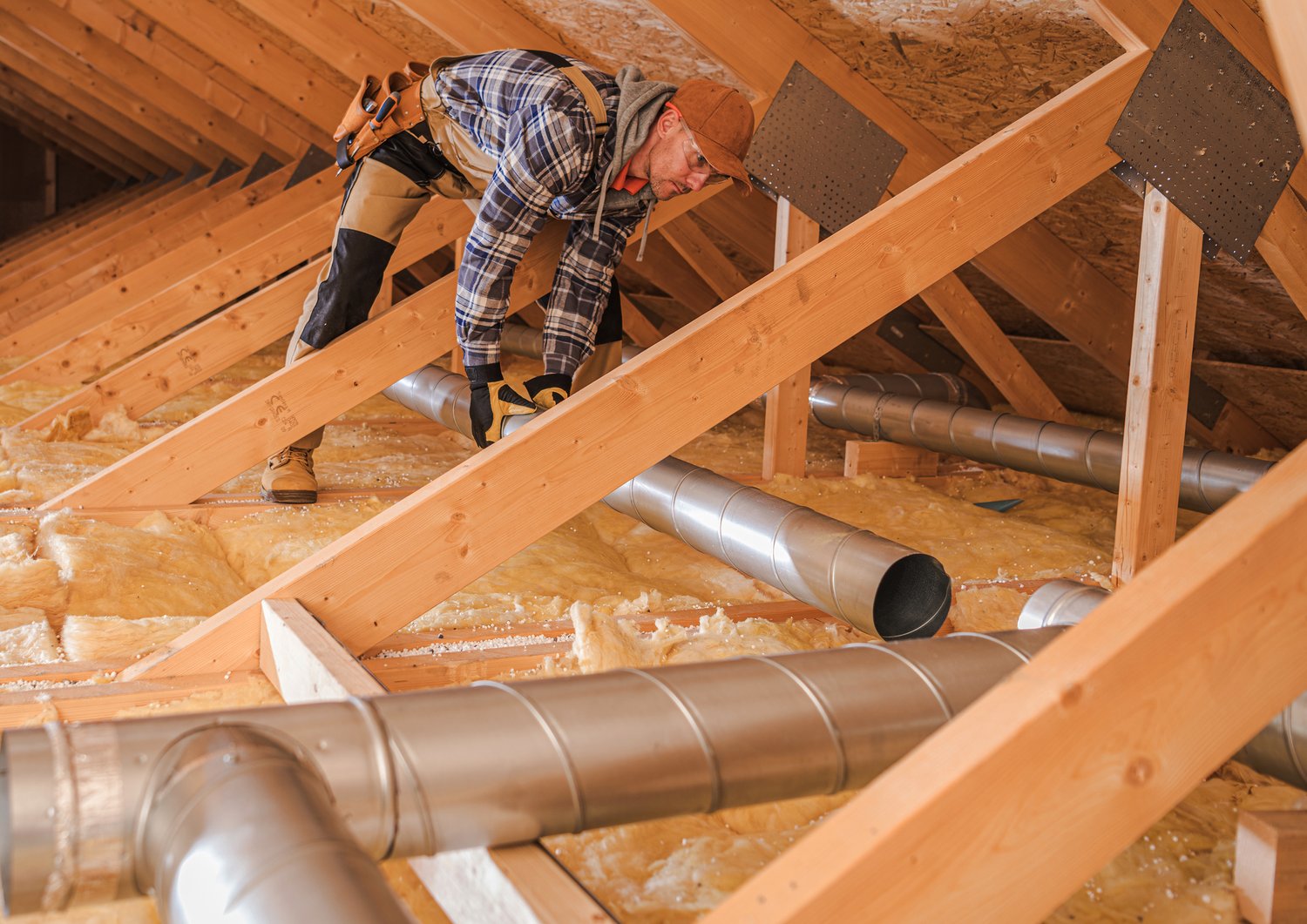Your home’s heating and cooling system works tirelessly to maintain comfort throughout the seasons, but it might be fighting an uphill battle due to leaky ductwork. Many homeowners are unaware that unsealed ducts can waste up to 30% of conditioned air before it reaches its intended destination. This article explores how leaky ducts contribute to energy loss, the substantial benefits of sealing HVAC ductwork, and practical methods to address this common household efficiency problem whether through DIY approaches or professional services.
Understanding the Energy Loss Problem in Ductwork
When your HVAC system pushes heated or cooled air through your home’s ductwork, any gaps, cracks, or poorly connected sections become escape routes for that conditioned air. This air leakage typically occurs in areas you rarely see—attics, crawlspaces, or basements—making it easy to overlook. The result is a significant decrease in your HVAC efficiency as your system works harder and longer to achieve desired temperatures. Prevent energy loss from leaky ducts by understanding that these seemingly minor imperfections collectively create a major efficiency problem that directly impacts your comfort and utility bills.
Ductwork issues are particularly problematic because they represent a constant, ongoing drain on energy resources. Unlike occasional maintenance issues, unsealed ducts continuously waste energy with every cycle of your HVAC system. This persistent waste adds up dramatically over time, often accounting for hundreds of dollars in unnecessary energy costs annually for the average homeowner.
Key Benefits of Sealing HVAC Ductwork
The benefits of sealing HVAC ductwork extend far beyond simple energy conservation. Properly sealed ducts create more consistent temperatures throughout your home, eliminating those puzzling hot or cold spots that can make certain rooms uncomfortable. This improved air distribution ensures that every room receives the appropriate amount of conditioned air, creating a more comfortable living environment overall.
From a financial perspective, the investment in duct sealing typically pays for itself through energy savings within a relatively short timeframe. Many homeowners report noticeable reductions in their utility bills immediately following proper duct sealing. Additionally, when you improve HVAC efficiency through duct sealing, you reduce the strain on your heating and cooling equipment, potentially extending its operational lifespan and reducing the frequency of repairs.
Environmental benefits also accompany this improved efficiency. By consuming less energy to heat and cool your home, you reduce your carbon footprint and contribute to broader energy conservation efforts. Sealing ducts also improves indoor air quality by preventing dust, allergens, and pollutants from entering the system through leaks in unconditioned spaces.
DIY Duct Sealing Tips for Homeowners
Many homeowners can tackle basic duct sealing as a DIY project with the right materials and approach. Begin by inspecting accessible ductwork in attics, basements, and crawlspaces while your system is running to feel for escaping air. Look for obvious disconnections, tears, or gaps in the ductwork.
For effective DIY duct sealing, mastic sealant is generally preferred over standard duct tape, which tends to degrade over time. This specialized sealant creates a durable, long-lasting seal when applied to clean ductwork surfaces. Metal tape designed specifically for HVAC applications also provides effective sealing for smaller leaks and connections. When working with flexible ductwork, pay special attention to the connections, as these are common areas for leakage.
While DIY methods can address visible and accessible ductwork issues, remember that significant portions of your ducting may be concealed within walls or other hard-to-reach areas. This limitation highlights why some homeowners ultimately opt for professional services for comprehensive sealing.
Professional Duct Sealing: Process and Cost Considerations
Professional duct sealing offers comprehensive solutions that typically exceed what’s possible with DIY approaches. HVAC professionals use specialized equipment to identify leaks throughout the entire duct system, including those in inaccessible areas. Many professionals employ aerosol-based sealing technologies that can reach leaks in concealed ductwork without requiring wall access.
The professional duct sealing cost varies depending on your home’s size and duct system complexity, typically ranging from $500 to $2,000. While this represents a significant investment, the energy savings often justify the expense, especially for homes with substantial leakage issues. You can find qualified duct sealing professionals through AskHomey, where verified contractors can provide detailed estimates based on your specific needs.
Beyond cost, consider that professional duct sealing often comes with warranties and guarantees that provide peace of mind regarding the work’s effectiveness and durability. Professionals can also identify other HVAC efficiency issues during their assessment, potentially addressing multiple concerns in a single service visit.
Maintaining Sealed Ductwork for Long-Term Efficiency
After investing in duct sealing, whether through DIY efforts or professional services, protecting that investment through proper maintenance ensures continued efficiency benefits. Schedule regular HVAC maintenance that includes duct inspection to catch new leaks before they develop into larger problems. During these inspections, pay particular attention to connection points and areas where previous repairs were made.
Additionally, be cautious about activities that might compromise your ductwork, such as renovation projects or accessing attic storage. Accidental damage during these activities can create new leakage points that undermine previous sealing efforts. If you notice a sudden change in your HVAC system’s performance or energy consumption, consider having your ductwork reinspected for new leaks.
For more tips and to connect with reliable home service professionals, follow AskHomey on Facebook and Instagram.



